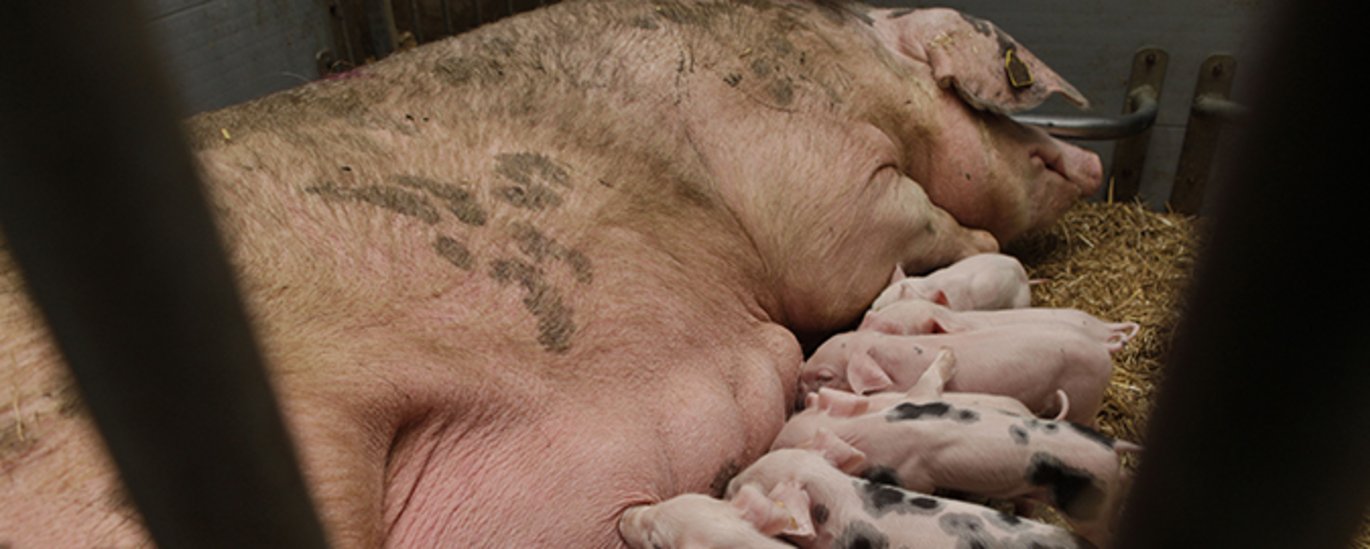Why do sows die – and what can we do about it?
Sow mortality on Danish farms has fallen in recent years, but there is a need for more measures. A new DCA report from the Department of Animal Science charts causes and possible strategies for reducing mortality further.

In recent years Danish pig farmers have had a particular focus on reducing sow mortality. This is one of the reasons that sow mortality has fallen from approximately 15.1 percent in 2008 to 11.4 percent in 2015. However, sow mortality is still higher in Denmark that in countries with which we normally compare ourselves. The pig industry has therefore decided to increase its efforts to reduce sow mortality to 9 percent by 2018.
As part of the agreement between Aarhus University and the Ministry of Environment and Food of Denmark regarding policy support, researchers form the Department of Animal Science were asked to chart the causes of sow mortality in Denmark, examine possible strategies for reducing it, and propose new measures. The results have been published in a report from DCA – Danish Centre for Food and Agriculture, Aarhus University.
More knowledge about prevention of lameness
Sows that die on commercial farms can be placed in one of two groups; sows that were euthanized and sows that die naturally. The report includes a review of reported studies of causes of death and risk factors and shows there is a big difference between the two groups with regard to causes of death. Professor Jan Tind Sørensen from the Department of Animal Science explains:
- Sows are typically euthanised due to lameness while pig farmers cannot usually state the cause of death among sows that die naturally. We know from studies of autopsies of sows that died from natural causes that typical reasons are disorders in the digestive tract, heart problems or problems in connection with farrowing. However, even with autopsies almost one third of the causes of death are unknown.
Since many of the euthanised sows are culled due to lameness, the researchers recommend the establishment of a systematic monitoring system in the gestation housing, and development of criteria for when sows should be moved to hospital pens. There should also be more focus on the quality and quantity of said hospital pens.
- Another obvious measure is to develop uniform criteria for euthanasia for all sow farms. However, if we want to reduce sow mortality significantly, there is a basic need for more research in how to prevent lameness in the first place and how to design service and gestation housing, says Jan Tind Sørensen.
Autopsies as an integral part of health advice
With regard to reducing the number of sows that die of natural causes, the researchers point out that information about the cause of death and sow condition must be gathered systematically, and that autopsies should be an integral part of veterinary health advice on the sow farm. Extended autopsies should also be considered.
In addition, abattoirs should routinely inform pig farmers about stomach ulcer findings and plans should be developed on all farms for how to deal with the various diagnoses.
- The studies have also shown that heat stress is a risk factor, especially in the farrowing house, and that there is a need for more knowledge about the causes for spontaneous sow death in the farrowing house. We are currently on the lookout for new measures for causes of death that can supplement the traditional autopsy, says Jan Tind Sørensen.
You can read more in the report "Identification of risk factors and strategies for reducing sow mortality" published by DCA – Danish Centre for Food and Agriculture.
For more information please contact: Professor Jan Tind Sørensen, Department of Animal Science, email: jantind.sorensen@anis.au.dk, telephone: +45 8715 7923, mobile: +45 2078 3343
